|
Madagascar a wonderland for nature lovers
|
The Deep South part of Madagascar
is the extreme South part of Madagascar ; the country of Vezo, Mahafaly, Antanosy and Antandroy ( the 3 tribes of this region ). You have two ways to go there, both are very bad roads and are only available in dry season from June to November.
The first way is along the sea-side path through : Beheloka - Efoetse - Itampolo - Saodona - Bevoalavo - Lavanono - Cap Sainte Marie - Faux Cap. The second way is the national road which is as bad as the sea-side path ( both need a 4 WD vehicle ), through : Betioky - Ejeda - Ampanihy - Beloha - Tsiombe - Ambovombe Androy ( where you can see Zebu Market every Monday ). Your car runs through rivers in dry season because there is no water.
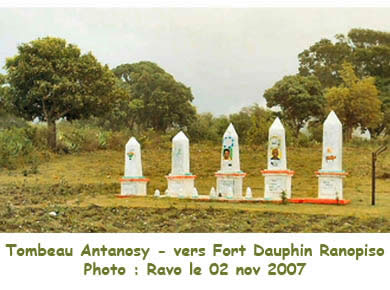
| |
|
|
|
|
|
|
|
|
|
|
The Deep South part of Madagascar
Is the land of spiny bushes, goats and zebus ; a lot of zebus ; but also the land of drought. The only region of Madagascar where people don't grow rice ( because of the lack of rain and limestone ground or sandy ground ). But it's the first region of Madagascar which produces manioc, sweet potatoes, corn, peanuts and beans.
In the Deep South part of Madagascar
You will be in contact with Vezo, Antandroy and Mahafale people.
Vezo people are fishermen.
Antandroy people are pastors ( they breed zebus & oxes ).
And Mahafale people and Antanosy people grow crops.
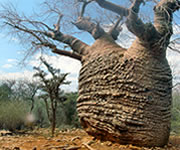
Madagascar deep south area
Ravo 2011 pictures © |
|
|
|
|
|
|
|
|
|
|
|
|
|
|
|
The vegetation
Includes Euphorbiaceae, Liliaceae ( such as aloes ), Apocynaceae ( such as bottle-trees ) and Didieraceae ( all endemic ).
Most of plants in this region are endemic and it's the part of Madagascar where the rain is the lowest : from 600 mm/year to ... 300 mm / year. To compare it, the part of Madagascar with the highest rain is the North East region, with 3500 mm / year. Everyday, it rains there. But here, it's the land of zebus and spiny plants.
|
|
|
|
|
|
|
|
|
|
|
|
|
|
|
|
|
|
|
| |
|
|
|
|
|
|
|
|
Zebu civilization in the South of Madagascar :
Zebus are the most important things for the Antandroy people. They are not sacred but Antandroy people don't hesitate to leave their villages to go to grassy ground even if they have comfortable huts, crops fields and water.
Antandroy people know their zebus very well. And the cattle give them happiness , the cattle are the most important wealth for them. They can give them a beautiful burial. So, to steal cattle of other people is a sign of bravery but not a sin for them. And more you have zebus, more the society respects you and gives you honor even if you steal cattle of others. As I told you, you can see Zebu Market every Monday in Ambovombe Androy.
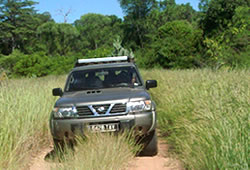 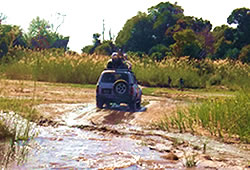 
The spiny land in the South of Madagascar :
The roy [ ruï ] is a spiny plant in the South ; So, Androy [ Andzuï ] means in the country of spiny plants & Antandroy [ Antandzuï ] means the people who live there.
For example, there are a lot of cactus there. People use them to fence their territories. During the pacification in the colonization, the french soldiers were terrified by these plants ( from 1899 to 1904 ). The Compte de Modave has introduced the cactus in the South part of Madagascar in 1770. And these plants have covered all the region. It's a 5m high plant, with yellow flowers and green or purple fruits ( you can eat them ).
People have eaten a lot of cactus fruits during the big drought ( Kere ) in 1991, because after eating them, you are able to not drink for few days. So the lack of water is not a problem for you even if the weather is very hot. The cactus leaves are used to feed zebus and other animals ( goats, sheeps, tortoises ).
|
|
|
|
|
|
|
|
|
|
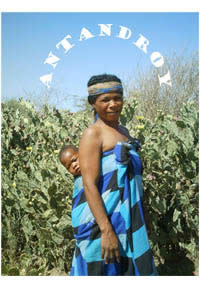
Andohahela National Park
| |
|
|
|
|
|
|
|
|
Naturalists will like this Park because of its particular forest ecosystem. Andohahela National Park is divided in 3 areas :
• First, the East area in the Anosyenne mountain chain with its evergreen humid forest because of much rains.
• Second, the West semi-arid part with just 600 to 800 mm of rain per year, so a spiny and succulent vegetation such as Pachypodium, Euphorbia plants and Aloe sp.
• And third, an intermediary zone between these two different climates with the famous endemic and decorative Triangle palm ( Dypsis decaryi ).
Anosy mountainous chain divides Andohahela National Park in 2 areas : the East region and the West ones. This chain stops the wind from the Indian Ocean, so it stops most of rain, it's the reason why the West part is semi-arid. You can visit Andohahela on foot or by mountain-bike ( you can rent it in Fort Dauphin ), and during the day or the night to try to find lemurs such as Sifaka, Ringtailed lemur or Mouse lemur.
Andohahela National Park ( 76 020 ha ) lies near Fort Dauphin ( a small town in the deep South part of Madagascar ), between 90 and 1972 m of altitude. People in the whole region get water from this Park, and use it to water their fields and ricefields.
About Andohahela flora, you can find an uncommon and unique palm tree, a palm tree that you found nowhere else on earth, the Dypsis decaryi. You can find too other amazing medicinal plants such as the Vanilla madagascariensis ( Vahinamalo : not perfumed but men use it like local viagra ), the Cedrelopsis greveii ( Katrafay : when you have diarrhoea ), the Uncarina grandidieri ( Farehitra : when you lost hair ), the Cyphostemma laza ( Laza : mediums use it for its magic power ), the Diospyros sp. ( Maintifo : sculptors and carpenters like this tree very much )
|
|
|
|
|
|
|
|
|
|
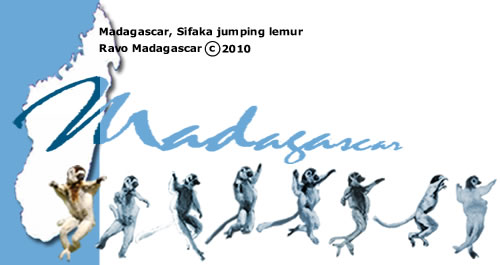
Antsokay Arboretum
which is located at 13 Km before to arrive in the city of Toliara if you take the national road N° 7. Antsokay Arboretum was created to preserve the endemic plants of southern Madagascar where you can see baobab trees and thorny forest and where you can watch wildlife especially for birds, reptiles and insects.
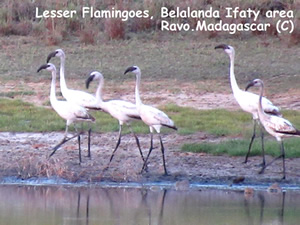
Lesser Flamingoes at Balalanda Ifaty
Ravo.Madagascar 2019 ©
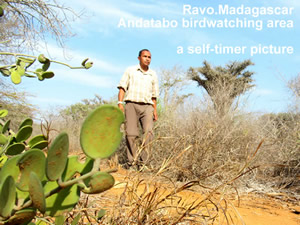
Black-winged Stilt at Balalanda Ifaty
Ravo.Madagascar 2019 ©
| |
|
|
|
|
|
Mutual Aid
The deep South part of Madagascar 2020-2021
2020-2021, an hideous and unexpected year because of the Covid-19 but in the deep South part of Madagascar, there are too drought and famine. So, the people in these areas need really help if you can, it will be a wonderful welcome for them. To help them to survive. God bless you, Amen !
For that this is the bank account number : 00008 00730 0500401161301, this is the bank account name : SP 07 KERE ( 'Kere' means famine ), this is the bank name : SG Tolagnaro and this is the phone number of the first responsible there, SOJA Arthur Pastor : ++261 34 74 778 04 ( that means 034 74 778 04 ).
Ho fanampiana KERE any Atsimo, Synodamparitany Ambovombe Atsimo Kristy Ranovelona. Ho voninahitr'Andriamanitra irery ihany. Misaotra Tompoko.
|
|
|
|
|
|
|
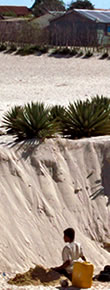  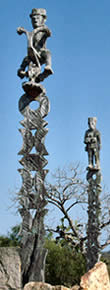 ![... Fa na roa arivo tapitrisa
Na tapitrisatapitrisa,
Masina ny tanindrazany ...
[ Suzy Ihazavà - 1993 ] starving in the South of Madagascar, need help](../Gif/Ravo_Madagascar_aloalo.jpg)
The South of Madagascar, Anakao and Ambovombe Androy areas
Ravo.Madagascar's pictures
| |
|
|
|
|
|
|
|
|
The South part of Madagascar
is the most exotic part of this big island. Its forests are home to thorny, water-retaining trees and shrubs which are unique to Madagascar. Due to its hot, sunny climate, the south is a popular tourist destination, especially in Fort Dauphin and Toliary regions. The wooden carvings and colourful paintings which decorate the ancestral tombs of Antandroy, Mahafaly and Antanosy tribes add unique character to the area and provide a haven for cultural enthusiasts and nature lovers.
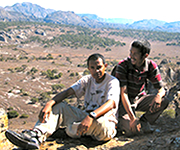
Photos taken in Isalo Park
1st picture : Ravo & KW
KW 2009 pictures ©
|
|
|
|
|
|
|
|
|
|
|
|
|
Isalo National Park
is one of Madagascar's most popular trekking and hiking destinations. The deeply eroded, weirdly shaped sandstone rocks and the rare endemic plants make it particularly rewarding for botanist. The absolute silence which exists creates an awe-inspiring sense of isolation and timelessness.
Isalo National Park is a very hot area and rugged so the water-filled canyons which act as natural swimming pools are a welcome relief to traveller.
|
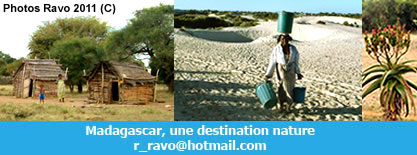


On the southernmost point of Madagascar are Faux Cap and Cap Sainte Marie. Faux Cap is a beautiful isolated spot with huge shifting sand dunes and wild breakers. Cap Sainte Marie is a spectacular reserve with high sandstone cliffs and dwarf plants. Always in this South part of Madagascar, let's talk about another National Park :
Andringitra National Park, Madagascar
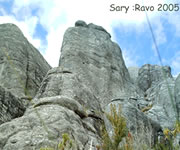
Ravo 2005 pictures © |
|
|
|
|
|
|
|
|
|
|
|
|
Has an area of 31 160 ha with an elevation range between 650 and 2658 m ( the second highest mountain in Madagascar, but the first accessible highest mountain ).
Andringitra became a National Park only in 1999. So it's one of the newest National Parks in Madagascar. The Park is within Fianarantsoa Province, in the Betsileo area.
It's very cold there in winter ( in July ) where you can have 7° C below 0. And the rainiest month is February.
|
Andringitra National Park
Can be divided in two sides, the western side and the eastern one. This eastern domain is a lowland humid forest, and the western domain contains montane forest and dwarf montane flora. Most of them are endemic. Approximately 1000 species of plants have been inventoried within the Park. You can find a lot of fern flora. There is too there around 106 species of birds, 13 species of primates, 57 species of amphibians and 35 species of reptiles ; most of them are endemic to Madagascar.

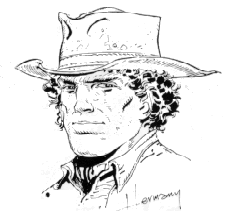  
|
|
|
|
|
|
|
|
|
|
|
|
| |
|
|
|
|
|
|
|
|
Clients' Testimony after their trip in Madagascar :
Whenever I think of Mada ( Madagascar ), I still hear the kids laughter … It’s the first thing that comes to my mind … Ravo, your laughter as well, although I have to admit, it has faded a bit. A journey to Madagascar isn’t an ordinary trip. I liked what you said one day : we behaved as travellers not as tourists. Once the decision is made to go on holiday to Madagascar, it’s more than just a holiday … It is an encounter with people. It is a discovery of stunning landscapes, of great variety. Mada is a mix of colours, a land of contrasts between ochre and green. It is the cold of the high plateaux, the heat of the South.
As soon as we arrived, at the airport, you welcomed us so amiably that we felt immediately confident with you. The trip being short, you managed to get us into the island mood from day one. We are fully aware you’ve done everything possible to satisfy “ your clients ” while crossing this island. We never felt we were clients though !!! Thanks to you Ravo … Your professionalism, your knowledge of the island, and above all your love for the inhabitants of Mada are the key to the success of our journey.
Every day had its emotions : the discovery of a village, of a landscape, of a new region. Emotions when we shared the joy of children running up to our bus. I still see them coming from far away … Emotions when you negotiated with the village chief to visit his hamlet, better even to enter some houses. Do you still remember Ravo, I forgot the name of the village, that place where a young blond girl of our party got surrounded by only black kids … it was quite emotional. I still can remember the smell of burning charcoal, that odour a little bit acrid whenever we crossed the villages. And those market places ! Those stands of fruit !!! I still see also those people of the highlands protecting themselves from the cold with the same blanket they use for bedding. So many memories ... Elisabeth and Georges CLERC ( France )

 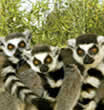 
Madagascar, a wonderland for nature lovers
Thank you to contact me
RATSIMBAZAFY Ravo Nomenjanahary
Copyright © 2000 Christian-thought

The Christian Counter
Forest
Gump


Webspace Provider
|
|
|
|
|
|
|
|
|
|
|
|
|
|
|
|